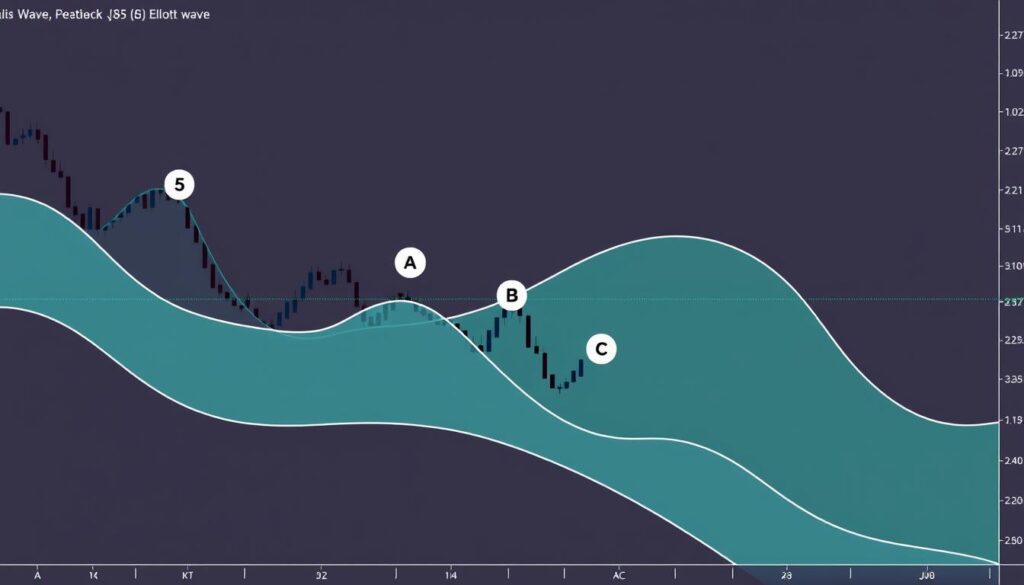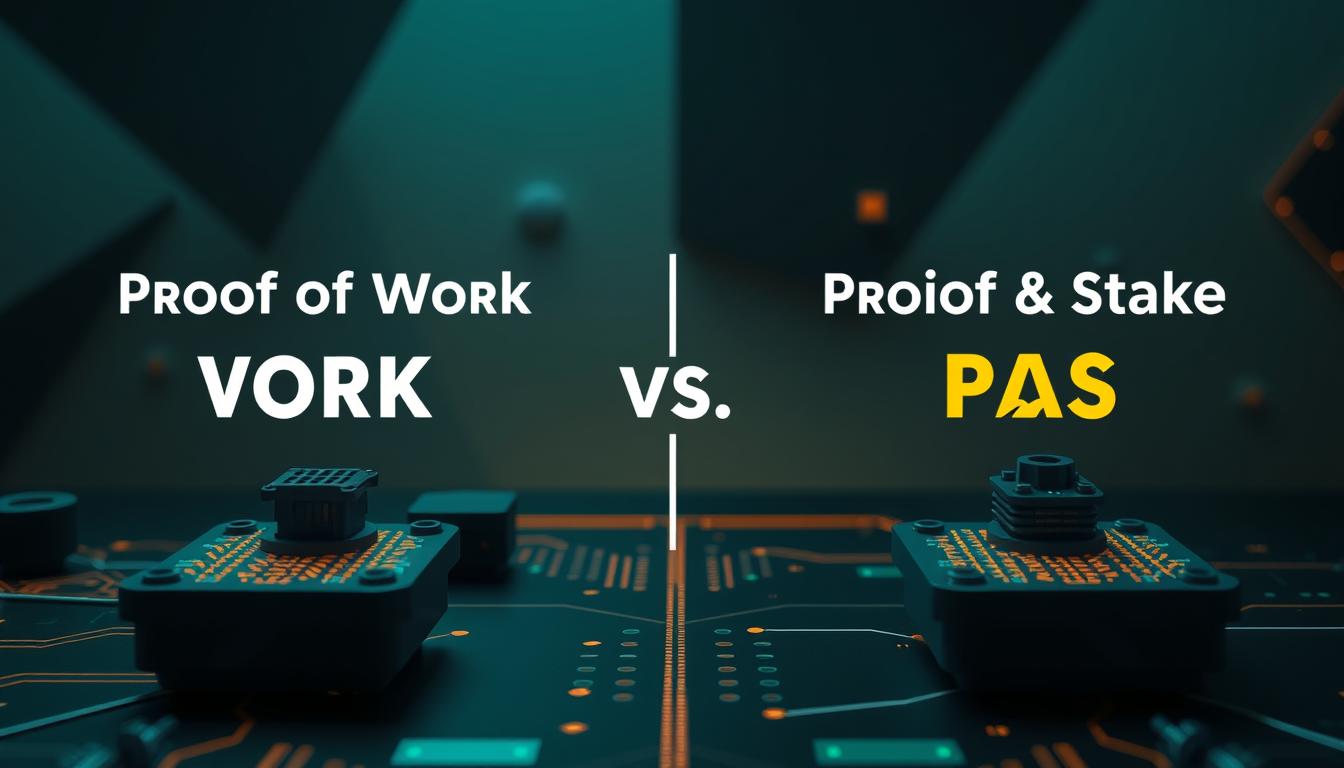Now Reading: Learn Crypto Scalping Strategy for Beginners: Proven Techniques
- 01
Learn Crypto Scalping Strategy for Beginners: Proven Techniques
Learn Crypto Scalping Strategy for Beginners: Proven Techniques

Entering the world of digital asset markets can feel overwhelming at first. This guide breaks down a powerful approach that focuses on quick, small gains throughout the trading day.
We’ll explore how this fast-paced method differs from longer-term investment styles. You’ll discover why many active participants find this approach appealing for capturing frequent profit opportunities.
The content covers everything from basic concepts to advanced technical analysis. You’ll learn practical techniques that successful market participants use daily. Real-world examples will show you how to implement these methods effectively.
By the end, you’ll understand how to build, test, and execute your own profitable approach. We’ll also cover essential risk management principles for navigating volatile conditions.
Key Takeaways
- Understand the core principles behind rapid-fire trading in digital markets
- Learn how this approach differs significantly from long-term investment strategies
- Discover the essential tools and mindset required for successful execution
- Master practical techniques used by experienced market participants
- Develop effective risk management strategies for volatile conditions
- Gain confidence to test and implement your own trading plan
Introduction to Crypto Scalping
Active market participants often seek methods that capitalize on frequent, small market fluctuations. This fast-paced approach differs significantly from traditional long-term investment styles.
What is Scalping in Cryptocurrency?
This method involves executing numerous quick trades to profit from minor price movements. Participants typically hold positions for mere minutes or even seconds.
The focus is on accumulating many small gains throughout the trading day. This requires monitoring ultra-short timeframes and high-frequency activity.
Benefits and Challenges for New Traders
Beginners appreciate the immediate feedback and limited market exposure. The short holding periods reduce overnight risk and provide quick learning opportunities.
However, this approach demands constant attention and quick decision-making. Transaction costs can accumulate rapidly, requiring careful profit management.
Understanding Market Volatility and Price Movements
Volatility is the lifeblood of short-term trading, creating the very opportunities traders seek. Digital currency markets are famous for their rapid and significant daily price movements. This constant change provides the foundation for capturing small, frequent profits.

Successful participants learn to spot quick price swings. They watch for sudden directional shifts and specific candlestick patterns on short timeframes. Recognizing these signals is crucial for timely entry into a trade.
Identifying Quick Price Swings
Momentum shifts often signal a potential opportunity. A sudden spike in buying or selling pressure can indicate a short-term trend. Traders aim to enter these movements early and exit before they lose steam.
Analyzing Trading Volumes and Liquidity
Volume gives context to price action. High trading volume confirms that a market move has conviction. It increases the odds that the movement will continue.
Liquidity is equally vital. Major pairs like Bitcoin and Ethereum offer deep order books. This means you can enter and exit positions quickly with minimal slippage, protecting your gains.
Focusing on liquid assets leads to more reliable price action. It separates healthy volatility from chaotic, unpredictable swings. This analysis is a key step in building a solid approach.
Crypto Scalping Strategy for Beginners: Key Concepts
Success in capturing small, frequent gains hinges on a clear comprehension of market mechanics and personal discipline. This method is not a single rigid system but a flexible combination of complementary skills.
Effective participants blend price action knowledge with an understanding of market structure. They also use technical indicators strategically to spot high-probability opportunities.

Choosing the right timeframe is critical. Most activity occurs on very short charts, like one to five minutes. These periods offer enough movement for profit without being overwhelmingly fast.
The required mindset differs greatly from long-term investing. It demands intense focus and emotional detachment from each individual trade. Quick, confident decision-making is non-negotiable.
Understanding market microstructure—how orders flow and liquidity works—is essential. This knowledge helps in executing trades efficiently and managing costs.
The core aim is to place tight stop-losses for protection. Many small profits then accumulate into meaningful returns over a session. This high frequency is a defining characteristic of the approach.
| Analytical Approach | Primary Focus | Key Benefit for Short-Term Trades |
|---|---|---|
| Price Action | Raw price movement and candlestick patterns | Provides direct, unfiltered market signals |
| Market Structure | Support, resistance, and trend analysis | Helps identify high-probability entry and exit zones |
| Indicator-Based | Mathematical calculations like RSI and moving averages | Offers objective data points to confirm visual analysis |
| Volume/Liquidity | Trading volume and market depth | Confirms the strength and sustainability of a price move |
Beginners must set realistic expectations about the effort and learning curve involved. Mastery requires practice and a honest assessment of one’s own psychological traits.
Tools and Platforms for Effective Scalping
The right technological setup is a cornerstone of success in rapid-fire digital asset trading. Your choice of software and hardware directly impacts your ability to analyze markets and act on opportunities swiftly.

Professional-grade charting tools are non-negotiable. Platforms like TradingView Premium offer real-time data and advanced indicators. They allow you to view multiple timeframes simultaneously for quick analysis.
Execution speed is equally vital. You need a broker known for fast order processing. Even a slight delay can turn a potential gain into a loss.
Essential Trading Platforms and Charting Tools
A reliable platform forms the foundation of your operation. Look for low-latency trading environments with deep liquidity. This ensures your orders are filled at the desired prices.
Your internet connection must be stable and high-speed. A disconnection during a live trade can be disastrous. Consistency in connectivity protects your capital.
Many professional scalpers use multi-monitor setups. This is not essential for newcomers but becomes valuable. It allows for tracking several assets or timeframes at once.
The Role of Automated Trading Bots
Automation introduces a powerful element to this fast-paced style. Bots can execute a predefined plan without emotional interference. They maintain discipline and speed that is challenging manually.
Manual trading relies on your constant monitoring and quick decisions. Automated tools handle the execution based on set rules. Each approach has distinct advantages for different styles.
Frequent transactions mean fees add up quickly. Selecting a service with a competitive fee structure is critical. This directly impacts your net profitability over a session.
| Tool Category | Primary Function | Key Consideration |
|---|---|---|
| Charting Software | Real-time data visualization and analysis | Customizability and speed of data feed |
| Trading Platform | Order placement and execution | Latency, liquidity, and order types supported |
| Automation Bot | Strategy execution without manual input | Reliability, customization, and backtesting features |
| Infrastructure | Internet and hardware support | Stability and redundancy to prevent downtime |
Developing a Winning Trading Strategy
Building a reliable method for quick trades requires choosing between hands-on control and automated precision. This decision shapes your entire daily routine and risk profile.
Your personal style, available time, and psychological temperament are key factors. The right plan feels natural and sustainable for you.

Manual vs. Automated Trading Approaches
The manual path puts you directly in charge of every decision. You watch live charts and execute orders based on your immediate analysis.
This offers great flexibility to adapt to unusual market events. It demands intense focus and the ability to make quick, confident choices.
Automated systems use programmed bots to follow a strict set of rules. They execute trades without emotional interference, ensuring discipline.
The key benefit is 24/7 market monitoring and consistent execution. However, bots may struggle with sudden, unexpected news that a human might navigate.
Popular Scalping Techniques and Setups
Several core techniques form the foundation of many successful plans. Range trading involves buying near identified support levels and selling at resistance.
Arbitrage seeks to profit from small price differences for the same asset across various platforms. This opportunity is becoming rarer as markets grow more efficient.
Another common method focuses purely on price action and candlestick patterns. It avoids complex indicators, relying on raw chart movements for signals.
Using leverage can amplify gains from minor price swings. It also significantly increases risk, requiring very careful capital management.
Technical Analysis for Quick Trades
Technical indicators provide the roadmap for navigating rapid price changes in fast-paced markets. These tools help market participants make informed decisions when time is limited.
Effective analysis combines multiple indicators to confirm signals. This approach reduces false opportunities and improves accuracy.
Leveraging Moving Averages and RSI
Moving averages smooth out price data to reveal trend direction. The exponential moving average (EMA) responds quickly to recent action.
This makes EMAs particularly valuable for short-term trading. They act as dynamic support and resistance levels on charts.
The relative strength index measures momentum behind price movements. Readings above 70 suggest overbought conditions, while below 30 indicates oversold.
These strength index levels help identify potential reversal points. The relative strength oscillator works well with other tools.
Identifying Entry and Exit Points
Clear entry exit points are essential for profitable execution. Combining RSI with Bollinger Bands creates powerful confirmation signals.
When price touches the upper band while RSI is overbought, consider exiting long positions. The opposite applies for oversold conditions.
These entry exit strategies help lock in gains quickly. They provide objective criteria for decision-making under pressure.
| Indicator Type | Primary Function | Best Use Case |
|---|---|---|
| Moving Averages (EMA) | Trend identification and dynamic support/resistance | Confirming overall direction on short timeframes |
| Relative Strength Index | Momentum measurement and overbought/oversold signals | Identifying potential reversal points for quick trades |
| Price Action Patterns | Raw price movement analysis without indicators | Quick visual signals for immediate entry/exit decisions |
Risk Management and Trade Execution
The foundation of sustainable trading lies in meticulous risk control and precise order execution. Without these safeguards, even promising approaches can lead to capital erosion.
Proper position sizing ensures that no single trade threatens your overall account balance. This discipline protects your capital during inevitable market fluctuations.
Setting Effective Stop-Loss and Take-Profit Levels
Protective stops should be placed just beyond key technical levels where your trade thesis would be invalidated. This approach minimizes unnecessary exits while containing potential losses.
Take-profit targets can be set at opposing support or resistance zones. Some traders prefer trailing stops to lock in gains while allowing profitable moves to extend.
The 1:1 risk/reward ratio provides a balanced framework for frequent trades. Conservative approaches might target the most extreme points of patterns.
Managing Transaction Fees and Market Risks
Frequent trading generates substantial commission costs that can transform theoretical profits into actual losses. Evaluating total costs including spreads and slippage is essential.
Fast execution becomes a risk management factor itself. Delayed order placement can result in worse entry prices or missed opportunities.
Setting defined loss limits prevents emotional decision-making during intense trading sessions. This discipline separates successful participants from those who deplete capital quickly.
| Risk Approach | Stop-Loss Placement | Take-Profit Strategy | Best For |
|---|---|---|---|
| Conservative | Beyond pattern extremes | Fixed support/resistance targets | New traders |
| Moderate | Key technical levels | Trailing stops | Experienced participants |
| Aggressive | Tight ranges | Riding momentum | High-frequency specialists |
Comparing Scalping and Day Trading
Understanding the nuances between different short-term methods is crucial for any active market participant. While both styles aim to profit from intraday moves, their execution and mindset vary significantly.
This comparison clarifies the core distinctions, helping you identify which approach aligns with your goals and temperament.
Key Differences in Strategy and Timeframes
The most apparent distinction lies in the duration of each trade. One method involves positions held for mere minutes or even seconds.
The other allows for holding periods lasting several hours, though all positions are closed by the day‘s end. This fundamental difference in time dictates everything else.
Frequency is another major factor. Practitioners of the faster style might execute dozens of trades in a single session. They target tiny price fluctuations, aiming for many small gains.
In contrast, the other approach involves fewer, more deliberate positions. The goal is to capture larger intraday price swings. This requires a different analytical depth and patience.
Chart timeframe selection is a direct reflection of these goals. Rapid-fire activity thrives on one to five-minute charts. This provides the granular data needed for quick decisions.
A longer-term intraday trader often analyzes 15-minute to hourly charts. This wider perspective helps identify more sustained trends. The choice of timeframe is a strategic commitment.
| Aspect | Scalping | Day Trading |
|---|---|---|
| Trade Duration | Seconds to a few minutes | Several minutes to hours |
| Trade Frequency | Very high (dozens per day) | Moderate (a handful per day) |
| Primary Profit Target | Accumulation of many small gains | Capturing larger percentage moves |
| Typical Chart Timeframe | 1-minute, 5-minute | 15-minute, 30-minute, 1-hour |
| Psychological Demand | Intense focus, rapid execution | Patience, disciplined analysis |
Neither style is inherently superior. The best choice depends on your personality and schedule. For a deeper dive into these distinctions, explore this discussion on the difference between scalping and day trading.
Some experienced individuals even blend techniques, using rapid methods during high volatility and longer-term analysis in calmer markets.
Key Scalping Indicators and Their Usage
Effective market navigation relies heavily on understanding and applying specific technical measurement tools. These instruments provide objective data points for quick decision-making.
Understanding the Relative Strength Index (RSI)
The RSI measures momentum behind price movements. Readings above 70 suggest overbought conditions, while below 30 indicates oversold.
This momentum oscillator helps identify potential reversal points. Many participants use it to time their entry and exit decisions.
Utilizing Support, Resistance, and Parabolic SAR
Support and resistance levels define zones where price repeatedly struggles to move beyond. These areas offer high-probability entry opportunities.
The Parabolic SAR indicator appears as dots above or below price action. It signals potential trend direction changes and momentum shifts.
| Indicator | Primary Function | Best Timeframe |
|---|---|---|
| RSI | Momentum measurement | 1-5 minute charts |
| Support/Resistance | Price zone identification | All timeframes |
| Parabolic SAR | Trend direction signals | 5-15 minute charts |
Combining these indicators creates powerful confirmation signals. This approach reduces false opportunities in fast trading environments.
Practical Tips and Strategies for New Traders
New market participants can accelerate their learning curve through systematic preparation. This approach minimizes early mistakes while building essential skills.
Begin with a demo account to practice without financial risk. This simulated environment lets you test methods and develop emotional control.
Steps to Start with Confidence
Gather comprehensive information about different approaches and platform fees. Understanding market behavior and asset reputation is crucial.
Select trading pairs with sufficient liquidity and volatility. Major assets like Bitcoin and Ethereum often provide better conditions for quick moves.
Choose a compatible exchange known for fast execution and competitive costs. Research platform reputation and available tools before committing funds.
Familiarize yourself with analysis tools and indicators. Many traders find automated programs helpful for making quick decisions.
Transitioning from Demo Trading to Live Markets
Start with minimal capital when moving to real trading. Maintain strict position sizing rules to protect your account.
Track all activity in a detailed journal. Record market conditions and emotional states alongside trade outcomes.
Increase trade sizes only after demonstrating consistent performance. This gradual approach builds confidence while managing risk.
Accept that losses are part of the learning process. Focus on developing a sustainable method rather than chasing individual profits.
For additional guidance on developing effective techniques, review this comprehensive resource on short-term trading methods.
Conclusion
The journey toward consistent profitability in fast-paced markets begins with education and deliberate practice. This trading approach offers a structured way to participate actively in digital asset markets.
True success comes from combining technical analysis with disciplined execution. The most effective participants systematically capture small price movements rather than chasing large, unpredictable profits.
Remember that consistency builds sustainable results over time. Start with demo accounts, develop your skills gradually, and maintain strict risk management as you progress.
FAQ
What is the main goal of a scalping approach?
The primary objective is to capture small price movements repeatedly throughout a session. This method aims to accumulate many minor gains that can add up to significant profits by the end of the day. Success relies on quick execution and precise analysis of short-term trends.
Which technical indicators are most useful for this fast-paced style?
Traders often rely on tools like moving averages to gauge direction and the Relative Strength Index (RSI) to spot potential entry and exit points. Volume indicators also help confirm the strength of a price move. Using a combination of these provides a clearer picture for rapid decisions.
How much time do I need to dedicate to this activity?
This is a very active style that requires constant attention to the charts. Trades may last only minutes, so you must monitor the market action closely during your trading hours. It is not a passive endeavor and demands significant focus.
What is a critical risk management rule for beginners?
Always use a stop-loss order for every position you open. This tool automatically closes your trade if the market moves against you by a predetermined amount, limiting potential losses. Proper risk control is essential to protect your capital from high volatility.
How do transaction fees impact overall profitability?
Since you will be placing many trades, fees can quickly eat into your profits. It is vital to choose a platform with low trading costs. Factor these expenses into your strategy to ensure your small gains are not negated by high commissions.
What is the difference between this and day trading?
The key distinction is the timeframe and holding period. Scalpers enter and exit positions within minutes, focusing on tiny price changes. Day traders may hold trades for hours, aiming for larger moves within a single session. The pace and profit targets differ significantly.















